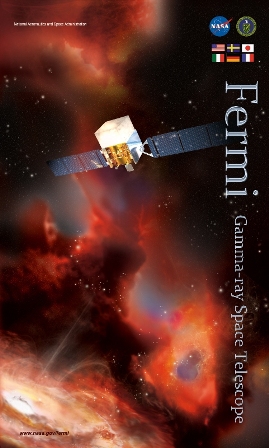Launched
on June 11, 2008, is one of several state-of-the-art observatories currently observing
the Universe across the electromagnetic spectrum from radio to high-energy
gamma-rays. The Fermi mission was built by a partnership of particle
physicists and astrophysicists from the United States, France, Germany,
Italy, Japan, and Sweden. It is providing new information about sources
of high-energy radiation from neutron stars in our galaxy to super massive
black holes in distant galaxies. Fermi’s enormous leap in capability
compared to previous observatories has opened a window of discovery that may
provide information about the identity of the invisible and unidentified
“dark matter” of the universe
The
revolution in understanding of our universe that is now underway has come
about because of the large amount of new information that has come from
observatories, both ground and space-based, that are only possible because of
continuing advances in technology that have allowed us to view the universe
across the electromagnetic spectrum. For example, from space, WMAP and
now Planck are measuring the properties of the microwave radiation left over
from the birth of the universe; the infrared vision of the Spitzer Space
Telescope allows us to peer into regions of space which are hidden from
optical telescopes such as the center of our Milky Way Galaxy containing
newborn stars; the refurbished Hubble Space Telescope continues to provide
unprecedented deep and clear views of the Universe, ranging from our own
solar system to extremely remote fledgling galaxies forming not long after
the Big Bang; the Chandra X-ray Observatory and the XMM-Newton satellite
observe X-rays from high-energy regions of the universe, such as the remnants
of exploded stars or from the hot gas gravitationally trapped by clusters of
galaxies; and the Fermi Observatory covers the highest energies ever observed
from a space-based observatory, allowing us to see an otherwise invisible
universe. |
|
MORE ABOUT FERMI
NASA Fermi Website
Stanford University Fermi Website
Sonoma State University Fermi Website
GLAST Burst Monitor
 |









